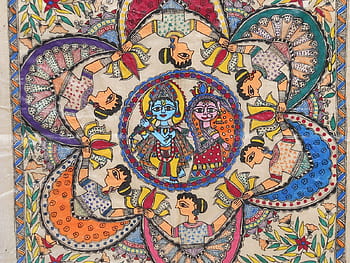Table of Contents
Introduction: Indian Crafts
Indian crafts have a rich and diverse history that spans thousands of years, reflecting the country’s vibrant culture, artistic heritage, and skilled craftsmanship. From intricate textiles to ornate metalwork, India’s crafts have evolved over time, blending tradition with innovation. In this blog post, we’ll take you on a journey through the history, timeline, and evolution of Indian crafts, showcasing the incredible legacy of creativity that continues to thrive today.

Ancient Roots: Prehistoric and Indus Valley Civilization
The roots of Indian crafts can be traced back to prehistoric times when early humans began creating tools, pottery, and decorative items. However, it was during the Indus Valley Civilization (3300–1300 BCE) that crafts started to flourish. Archaeological findings reveal exquisite pottery, jewelry, and figurines made from materials like terracotta, metal, and stone.
Buddhist and Mauryan Period (6th-3rd Century BCE)
The spread of Buddhism played a significant role in shaping Indian crafts. During this period, intricate sculptures and stupas were created to reflect the spiritual beliefs of the time. The Mauryan dynasty also marked the beginning of the Indian tradition of stone carving and sculpture.

Golden Age: Gupta Period (4th-6th Century CE)
The Gupta period is often referred to as the golden age of Indian art and crafts. This era saw the flourishing of various art forms, including sculpture, painting, and architecture. The Ajanta and Ellora caves, famous for their intricate rock-cut architecture and stunning frescoes, are notable examples from this time.
Medieval Era: Mughal and Sultanate Periods (12th-19th Century CE)
The arrival of various rulers, including the Mughals and regional sultanates, contributed to a rich synthesis of artistic styles. This era witnessed the creation of exquisite miniature paintings, intricate carpets, and the introduction of Persian and Central Asian influences.
Colonial Influence and Revival: British Period (17th-20th Century CE)
The British colonial period brought challenges to traditional crafts, but it also led to the revival of some art forms due to the efforts of reformists like Rabindranath Tagore. The Bengal School of Art emerged during this time, emphasizing traditional Indian techniques and themes.

Modern Indian Crafts: Post-Independence Era (20th Century-Present)
After gaining independence, India experienced a renewed interest in its cultural heritage. The revival of traditional crafts gained momentum, with efforts to preserve and promote various art forms. Government initiatives, such as the establishment of craft clusters and support for artisans, have played a vital role in sustaining these traditions.
Evolution of Indian Crafts
1. Textiles: Indian textiles are renowned worldwide for their intricate patterns, vibrant colors, and skilled craftsmanship. Techniques like block printing, tie-dye (bandhani), and embroidery (such as Kantha and Chikankari) have evolved over centuries, adapting to changing trends while preserving their authenticity.
2. Pottery and Ceramics: Pottery making is deeply rooted in India’s heritage. From the terracotta figurines of the Indus Valley to the intricate Blue Pottery of Jaipur, pottery has evolved while maintaining its regional uniqueness.
3. Metalwork: Indian metalwork, including brassware, silverware, and gold jewelry, showcases the country’s metallurgical excellence. Filigree work, Kundan jewelry, and Dhokra art are notable examples that have evolved over time.
4. Woodwork: Intricate wood carvings and furniture designs are integral to Indian crafts. Regions like Kashmir, Gujarat, and Rajasthan are known for their exquisite wooden handicrafts, which blend artistry with functionality.
5. Painting: From the vibrant Warli paintings of Maharashtra to the intricate Pattachitra of Odisha, Indian painting traditions have evolved to adapt to changing times while preserving their cultural significance.
10 Must try DIY Products You should try: Click here
Comparing Indian Crafts and World Crafts:
Craftsmanship is a universal language that reflects the cultural identity, artistic expression, and skills of a society. Both Indian crafts and world crafts carry the essence of human creativity, but they also exhibit distinct characteristics shaped by their unique histories, traditions, and influences. In this comparison, we’ll explore the similarities and differences between Indian crafts and world crafts.
Cultural Diversity and Heritage:
Indian Crafts: Indian crafts boast a rich tapestry of diversity due to the country’s vast geographical and cultural landscape. Each region in India has its own unique craft traditions, often influenced by historical, religious, and societal factors. For instance, the intricate textiles of Gujarat, the woodwork of Kashmir, and the metalwork of Tamil Nadu are all deeply rooted in their respective cultural contexts.
World Crafts: World crafts are equally diverse, reflecting the cultural richness of various regions and countries. Crafts like Japanese origami, Mexican Talavera pottery, African beadwork, and Middle Eastern mosaic art showcase the unique aesthetics and techniques of their respective cultures.

Materials and Techniques:
Indian Crafts: Indian crafts employ a wide range of materials and techniques, from textiles (silk, cotton) and metals (gold, silver) to pottery, wood, and stone. Traditional techniques such as block printing, weaving, embroidery, and intricate metal filigree contribute to the distinctiveness of Indian crafts.
World Crafts: World crafts exhibit an array of materials and techniques as well. For instance, Scandinavian crafts often use natural materials like wood and leather, while African crafts might emphasize beadwork and handwoven textiles. The materials and techniques chosen often reflect the availability of local resources and the needs of the community.
Cultural Influence and Symbolism:
Indian Crafts: Indian crafts are deeply intertwined with cultural, religious, and mythological narratives. Crafts like Pattachitra painting often depict stories from Hindu epics, while Kolam designs in South India have spiritual and auspicious connotations. Many Indian crafts are symbols of heritage and serve as a bridge between generations.
World Crafts: Similarly, world crafts frequently incorporate cultural symbols, stories, and rituals. For example, Navajo rugs from Native American cultures incorporate traditional patterns, and Chinese porcelain often features auspicious motifs. These crafts play a role in preserving cultural identities and narratives.
Global Impact and Commercialization:
Indian Crafts: Indian crafts have gained international recognition for their craftsmanship and cultural significance. They have a substantial global market, but there’s a growing need to balance commercialization with the preservation of traditional techniques and fair compensation for artisans.
World Crafts: World crafts from different regions have also found their place in the global market. However, the challenge of maintaining authenticity and providing fair wages to artisans persists across various countries and crafts.
Conclusion:
Indian crafts have a rich history that reflects the nation’s artistic diversity and cultural heritage. Over the millennia, these crafts have evolved, adapting to changing times and embracing innovation while retaining their authentic essence. The journey through the history, timeline, and evolution of Indian crafts is a testament to the enduring creativity of artisans and the remarkable blend of tradition and modernity that defines India’s artistic legacy. As we continue to appreciate and support these crafts, we contribute to the preservation and continuation of a living cultural treasure.
While Indian crafts and world crafts share the common thread of artistic expression, they are also deeply influenced by their unique cultural contexts and historical trajectories. Both celebrate the creativity and ingenuity of artisans around the world, providing us with a lens through which we can appreciate the diversity and beauty of human culture. As we cherish and support these crafts, we contribute to the preservation of cultural heritage and the livelihoods of skilled artisans worldwide.

